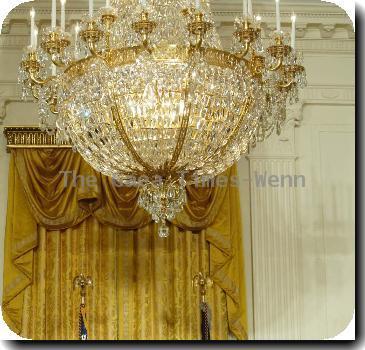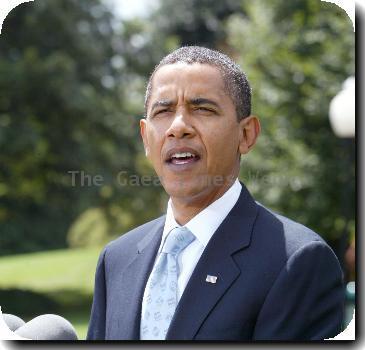For those in a tight spot, costly loans and cards still remain
By Candice Choi, APSunday, February 21, 2010
Despite reforms, costly loans and cards remain
NEW YORK — You can still get credit if your finances are a mess. It will just cost dearly.
A sweeping credit card law that takes effect Monday was supposed to prevent banks from employing tactics that yanked borrowers deeper into debt. Yet an array of loans and cards with crushing terms still beckons from every corner.
Consider a subprime credit card that now comes with a 59.9 percent interest rate. There are also payday loans and prepaid cards, both of which can come at steep costs.
The lenders serving risky borrowers say high fees and interest rates are necessary because their customers are more likely to default on loans. Restrictions on what they charge could put them out of business, and leave the neediest with no options at all, they say.
President Barack Obama is nevertheless pushing for the creation of a consumer protection agency that would consolidate oversight of such products, but its fate is uncertain amid negotiations for broader financial reforms.
Meanwhile, advocacy groups say the crescendo of public anger toward the credit card industry, and the resulting reforms, show the need for greater consumer protections.
Already, about a quarter of U.S. households either don’t have a relationship with a bank or nevertheless rely on alternative financial services such as payday loans, according to a first-of-its kind FDIC study.
“It’s in nobody’s interest to lend people money they can’t afford to repay,” says Kathleen Day of the Center for Responsible Lending. “If the economic crisis we’re in now doesn’t underscore that for lawmakers, what will?”
In the absence of closer oversight, here’s a look at three common resources for strapped borrowers: payday loans, prepaid cards and subprime credit cards.
_____________
PAYDAY LOANS
There are about 22,000 payday lending branches around the country, compared with 14,000 McDonald’s restaurants.
Their widespread presence makes payday lenders easy to turn to in a pinch; about 19 million people did so last year, according to industry figures.
To obtain a payday loan, consumers give the lender a postdated check for the amount of the loan plus a fee, usually $15 or so for every $100 borrowed.
The lender holds the check for about two weeks, at which point the money is repaid or the check is cashed. In some states the loan can be rolled over for another fee.
Sylvia Brown, a 42-year-old office manager, pays $76 nearly every other Friday for a $600 advance on her paycheck because she can’t make ends meet week to week. She’s been getting loans regularly for about five years now. In just one year, that would add up to about $1,800 in fees.
“I’ve thought about what I’d do with that money. For one thing, I could put it toward paying off my medical expenses,” says Brown, who lives with her mother in Grass Lake, Mich.
The fee is easy to understand, at least on the surface. But translate that average fee on a $100 loan into an annualized rate, as on a credit card, and you’re looking at interest of 391 percent.
This passes muster even under the new credit card law, however, since there’s still no cap on rates.
The industry group for payday lenders notes that its fees are cheaper than the alternatives for desperate borrowers. A late credit card payment could trigger a $37 fee, for example. Overdraft fees for checking accounts can be $29 or more.
Still, a dozen or so states have effectively banned payday lending. Lawmakers elsewhere worry about choking off a key source of cash for low-income borrowers.
_____________
PREPAID CARDS
Rows of prepaid cards dangle from the racks of just about any Walmart or convenience store. Consumers are pitched their benefits online and through the mail.
The cards offer a vital convenience for those who don’t have credit or debit cards. They can be used to pay bills online, book airplane tickets, and generally provide a sense of security that cash may not.
Users load them with cash and replenish as needed. The cards carry a Discover, Mastercard or Visa logo and can come with a tangle of fees. It costs as much as $29.95 just to buy one.
The fees vary wildly too, so navigating them can be dizzying. There are monthly maintenance fees, ATM withdrawal fees, balance inquiry fees, bill pay fees and inactivity fees.
“Pretty much every time you use it there’s a fee,” says Manny Villalobos, a 36-year-old sales rep in Pacoima, Calif.
He wrecked his credit in the aftermath of a layoff, divorce and a string of panic attacks that landed him in the emergency room. Now he can’t get a credit card from a major bank.
Not all cards are so fee-heavy. But even one of the more affordable cards costs $4.95 to buy, and charges a $5.95 monthly maintenance fee unless certain usage requirements are met.
Despite the costs, an estimated $36.6 billion will be loaded onto prepaid cards this year, double the $18.3 billion last year, and more than four times the $8.7 billion total of 2008.
“More people are starting to look to these as it becomes more challenging to get credit cards or even checking accounts,” says Kirsten Trusko, president of the Network Branded Prepaid Card Association.
Considering there’s no risk for issuers, however, the costs can be steep.
Take the Millennium Advantage card, which charges a $29.95 activation fee and $5.95 monthly maintenance. Any use of the card seems to come with a fee. It’s $1.95 per ATM withdrawal, for example, and $1 per minute to call a customer representative.
Yet for all the fees, issuers of prepaid cards aren’t required to provide the same legal protections as for credit or debit cards, such as limited liability if they’re stolen. The Federal Reserve is studying whether to change that, but hasn’t set a deadline on a decision.
______________________
SUBPRIME CREDIT CARDS
Subprime cards, marketed to those with poor credit scores, typically come larded with fees despite credit lines that are often only a couple hundred dollars. Just about anybody can get one.
Starting Monday, fees in the first year will be capped at 25 percent of a card’s credit limit. But the issuers of subprime cards have already adapted.
Because there’s no cap on interest rates — an area that’s historically been left to state regulators — the APRs on subprime cards have reached as high as 79.9 percent. And so long as cardholders are given 45 days notice, they could climb higher still.
First Premier, one of the biggest players in the subprime credit card arena, even found a way around the cap on fees. It now charges a $45 processing fee before a card is issued.
If approved, cardholders are charged a separate $75 annual fee, which is exactly 25 percent of the $300 credit line. That fee is deducted from the credit line, so the card arrives with a $75 balance before it’s even used.
Fail to pay and a 59.9 annual percentage rate starts taking its toll.
It may not sound like reform, but such terms are necessary to cover the 25 percent default rate among its customers, says Miles Beacom, president and CEO of the Premier Bankcard.
“Risky borrowers understand they’ve made mistakes,” he says. “And they’re willing to pay the costs.”
Tags: Barack Obama, Geography, Government Regulations, Industry Regulation, New York, North America, Personal Finance, Personal Loans, United States




